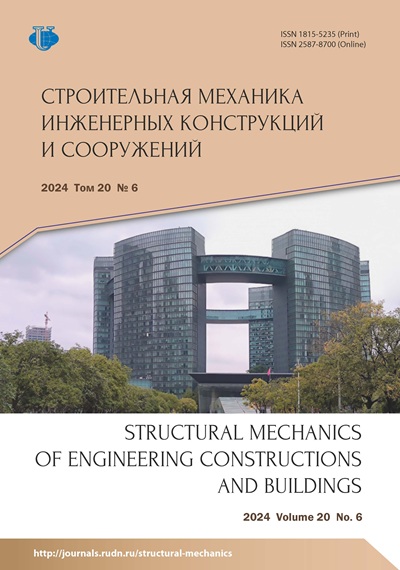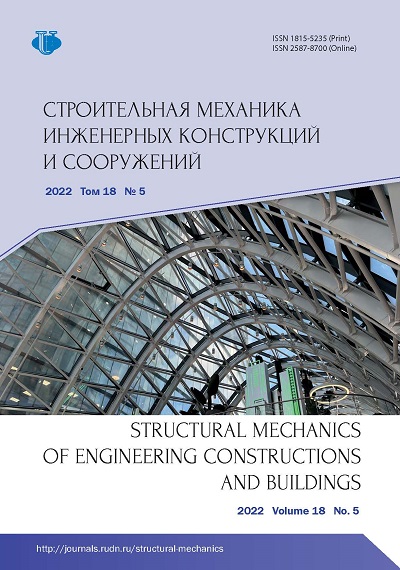Abstract
The authors present the results of the analysis of field observations of the condition of the base slab of the water intake structure of hydroelectric power plant (including the stresses in the reinforcement in the areas of intersection with the vertical joints and the width of the opening of these joints). The aim of the study is to control the condition of the reinforced concrete structure of the foundation slab of the water inlet of the hydroelectric power plant, as well as to develop measures to strengthen the bottom section of the foundation slab in the areas of vertical interblock joints. In order to control the stress and strain of the base plate of the water intake of hydroelectric power plant, string control and measuring equipment was installed: on reinforcement rods - reinforcement dynamometers PSAS, on vertical interblock joints - displacement sensors PLPS. The field observations of the stress state of the reinforcement of the base slab of the water intake structure of hydroelectric power station showed that high values of tensile stresses, exceeding the design resistance of A500C class reinforcement (435 MPa), occurred in the reinforcement rods (directed along the flow), crossing the lower vertical interblock joints. There was also fixed the width of opening of the vertical interblock joint, reaching 1.28 mm. There was a necessity to strengthen the lower section of the foundation slab of the water intake structure of hydroelectric pumped storage power plant. For this purpose, inclined reinforcing bars (anchors) crossing the lower vertical interblock joints were installed. The outlet sections of the buttresses of the slab of the downstream section of the inlet to the downstream parapet were increased.
















